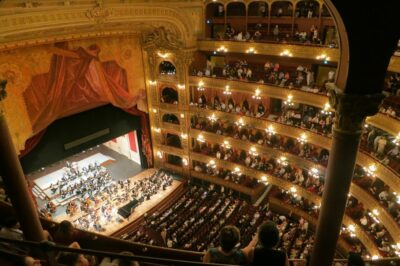Germany and South America update their relations – it was about time for that
Chancellor Scholz’s visit paves the way for closer cooperation with the long-neglected region. It is the first step in a rapprochement between partners who have lost sight of each other.
by Alexander Busch, Latin America correspondent for Handelsblatt and Neue Zürcher Zeitung
Chancellor Angela Merkel last visited Brazil eight years ago. She launched consultations between the two governments as part of the strategic partnership with the country. These were to take place at the highest level regularly every two years.
But it never came to a continuation. Brazil was already in the midst of a serious economic and political crisis. Shortly thereafter, Dilma Rousseff was impeached. Brazil’s economy stagnated for over a decade, and most recently President Jair Bolsonaro isolated Brazil in the West with his environmental and human rights policies.
In retrospect, it can be said that Germany was ten years too late in offering government consultations with Brazil. After all, Brazil’s economic boom and geopolitical revaluation took place between 2005 and 2012. Germany had simply slept through the spirit of optimism in South America.
But Latin America as a whole was also not a priority for the German government for a long time. Merkel’s 2017 visit to Mexico and Argentina went largely unnoticed. Foreign Ministers Guido Westerwelle (2009 to 2013) and Heiko Maas (2018 to 2021) tried to elevate the region as a focus of their foreign policy – with little success.
That has now changed: Chancellor Scholz just visited Argentina, Chile and Brazil in a four-day trip. This time, many things were right:
Timing: The chancellor visited governments that welcomed foreign attention. In Brazil, Scholz was the first visiting head of government to pave the way for his colleague Lula to return to world politics. He paid respect to isolated Argentina. President Boric in Chile, who is in a polling slump, could also use Scholz’s support. In all three countries, the visit from Germany was well received. That was not always the case.
Political affinity: Governments in power in the states are politically close to the traffic light coalition in Berlin. Mutual trust is greater than in the last two decades. That makes the exchange easier.
Coalition of interests: Just as Germany wants to secure raw materials, energy and sales markets in South America, South American governments are hoping for technology transfer, better market access and political alternatives to the major powers China and the USA from Europe. The agreement between Mercosur and the EU could benefit from this. It is interesting for both sides.
Strategy: Scholz appeared in South America with a mixture of soft power and cash. During his visits, he emphasized the value of human rights and the fight for democracy. Svenja Schulze, Minister for Economic Cooperation and Development, who was also present in Brazil, suggested closer cooperation on environmental and climate policy and announced generous funding for an emergency program.
In Germany, the headlines were dominated by Brazil’s President Lula’s refusal to take sides in the Ukraine conflict and his insistence on a peace solution.
However, this is not surprising and shows how difficult it is for the West to mobilize the global South against Putin in the Ukraine war. In Latin America, support for sanctions against Russia is low.
This experience is just as important for Berlin as it is for Brasília, Buenos Aires and Santiago: Only if Europe and Latin America subject their relations to a reality shock will the chances for future realistic agreements increase. The EU-Mercosur agreement, which is on ice after 20 years of negotiations, is a cautionary example of how not to proceed.






